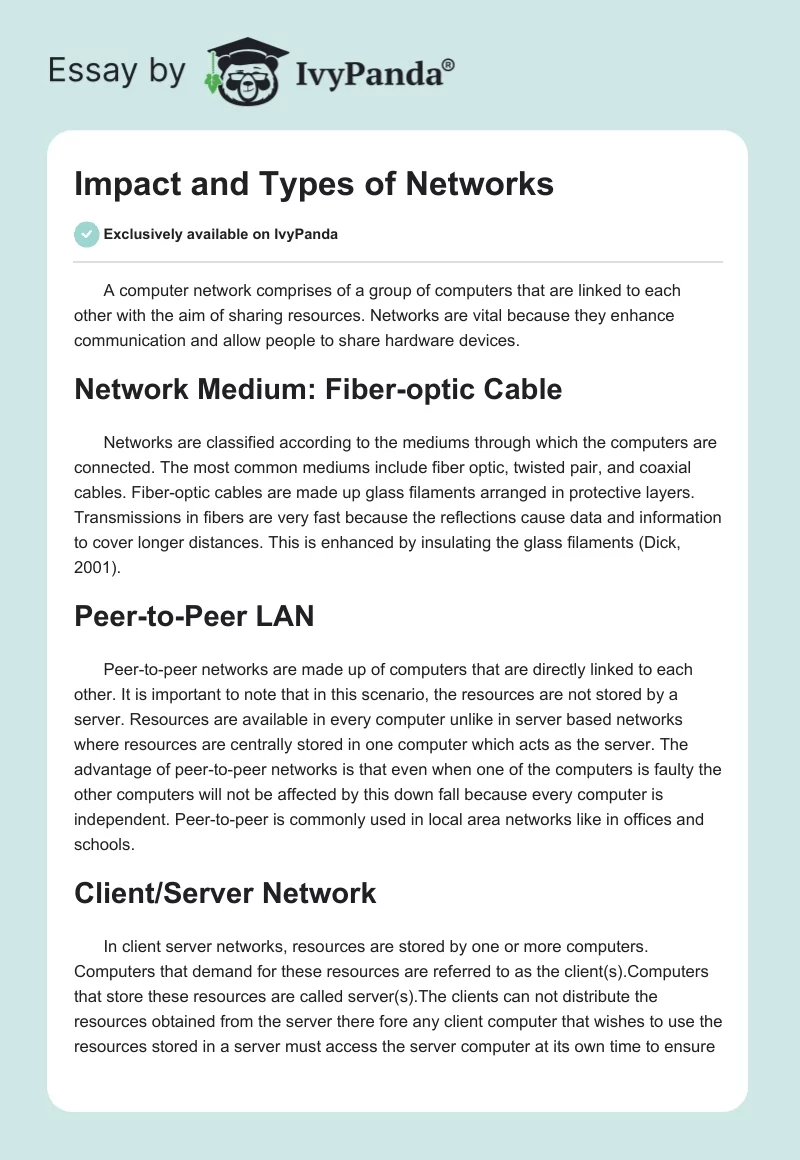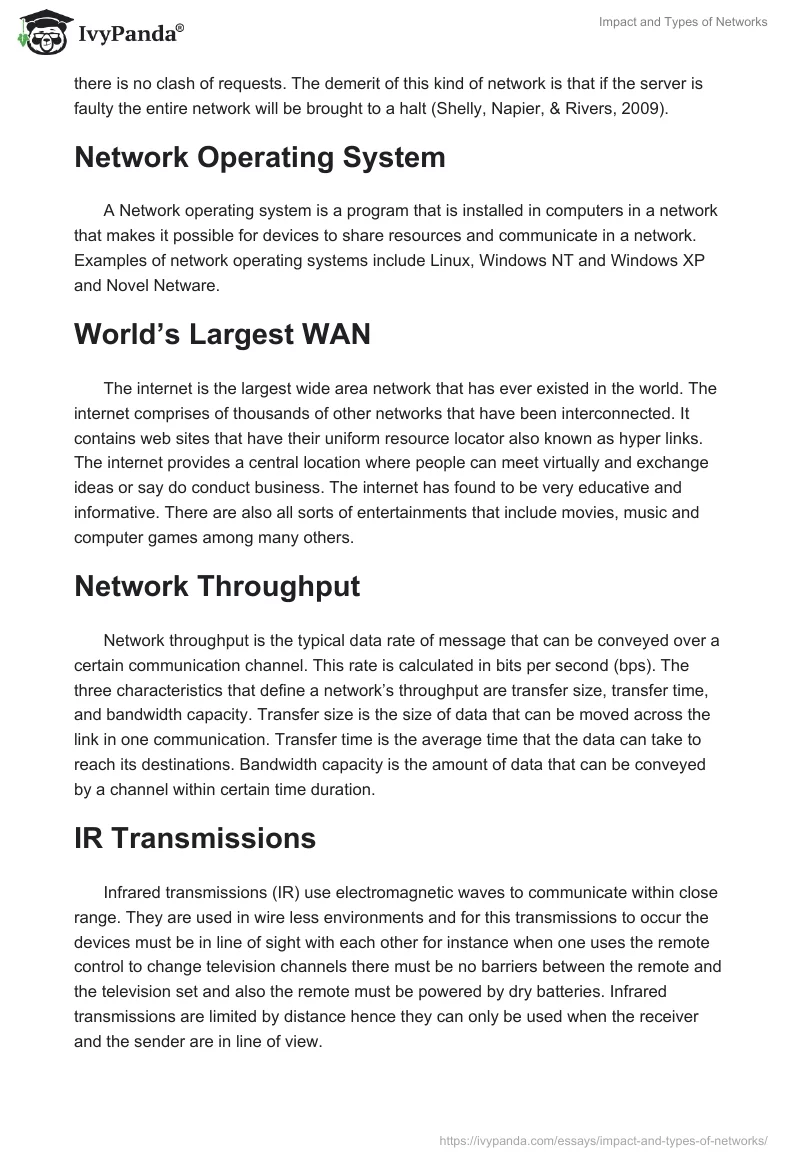A computer network comprises of a group of computers that are linked to each other with the aim of sharing resources. Networks are vital because they enhance communication and allow people to share hardware devices.
Network Medium: Fiber-optic Cable
Networks are classified according to the mediums through which the computers are connected. The most common mediums include fiber optic, twisted pair, and coaxial cables. Fiber-optic cables are made up glass filaments arranged in protective layers. Transmissions in fibers are very fast because the reflections cause data and information to cover longer distances. This is enhanced by insulating the glass filaments (Dick, 2001).
Peer-to-Peer LAN
Peer-to-peer networks are made up of computers that are directly linked to each other. It is important to note that in this scenario, the resources are not stored by a server. Resources are available in every computer unlike in server based networks where resources are centrally stored in one computer which acts as the server. The advantage of peer-to-peer networks is that even when one of the computers is faulty the other computers will not be affected by this down fall because every computer is independent. Peer-to-peer is commonly used in local area networks like in offices and schools.
Client/Server Network
In client server networks, resources are stored by one or more computers. Computers that demand for these resources are referred to as the client(s).Computers that store these resources are called server(s).The clients can not distribute the resources obtained from the server there fore any client computer that wishes to use the resources stored in a server must access the server computer at its own time to ensure there is no clash of requests. The demerit of this kind of network is that if the server is faulty the entire network will be brought to a halt (Shelly, Napier, & Rivers, 2009).
Network Operating System
A Network operating system is a program that is installed in computers in a network that makes it possible for devices to share resources and communicate in a network. Examples of network operating systems include Linux, Windows NT and Windows XP and Novel Netware.
World’s Largest WAN
The internet is the largest wide area network that has ever existed in the world. The internet comprises of thousands of other networks that have been interconnected. It contains web sites that have their uniform resource locator also known as hyper links. The internet provides a central location where people can meet virtually and exchange ideas or say do conduct business. The internet has found to be very educative and informative. There are also all sorts of entertainments that include movies, music and computer games among many others.
Network Throughput
Network throughput is the typical data rate of message that can be conveyed over a certain communication channel. This rate is calculated in bits per second (bps). The three characteristics that define a network’s throughput are transfer size, transfer time, and bandwidth capacity. Transfer size is the size of data that can be moved across the link in one communication. Transfer time is the average time that the data can take to reach its destinations. Bandwidth capacity is the amount of data that can be conveyed by a channel within certain time duration.
IR Transmissions
Infrared transmissions (IR) use electromagnetic waves to communicate within close range. They are used in wire less environments and for this transmissions to occur the devices must be in line of sight with each other for instance when one uses the remote control to change television channels there must be no barriers between the remote and the television set and also the remote must be powered by dry batteries. Infrared transmissions are limited by distance hence they can only be used when the receiver and the sender are in line of view.
RF Transmissions
Radio frequency (RF) transmissions incorporate radio waves in the transmission of audio signals from a sender to a receiver. Radio or television signals are common in RF transmissions. The sender or the signal transmitter must have an antenna that covers the area under transmission. The receiver units accept the modulated radio waves and change them into audio form. Thus, RF transmissions are easy to implement since only an antenna is required to initiate transmissions (Shelly, et al., 2009).
References
Dick, P. (2001). The new penguin dictionary of computing. New York: Penguin books.
Shelly, G.B., Napier, H.A, & Rivers, O. (2009). Discovering the Internet: Complete Concepts and Techniques. 3rd Ed. Boston: Cengage Learning, Inc.


